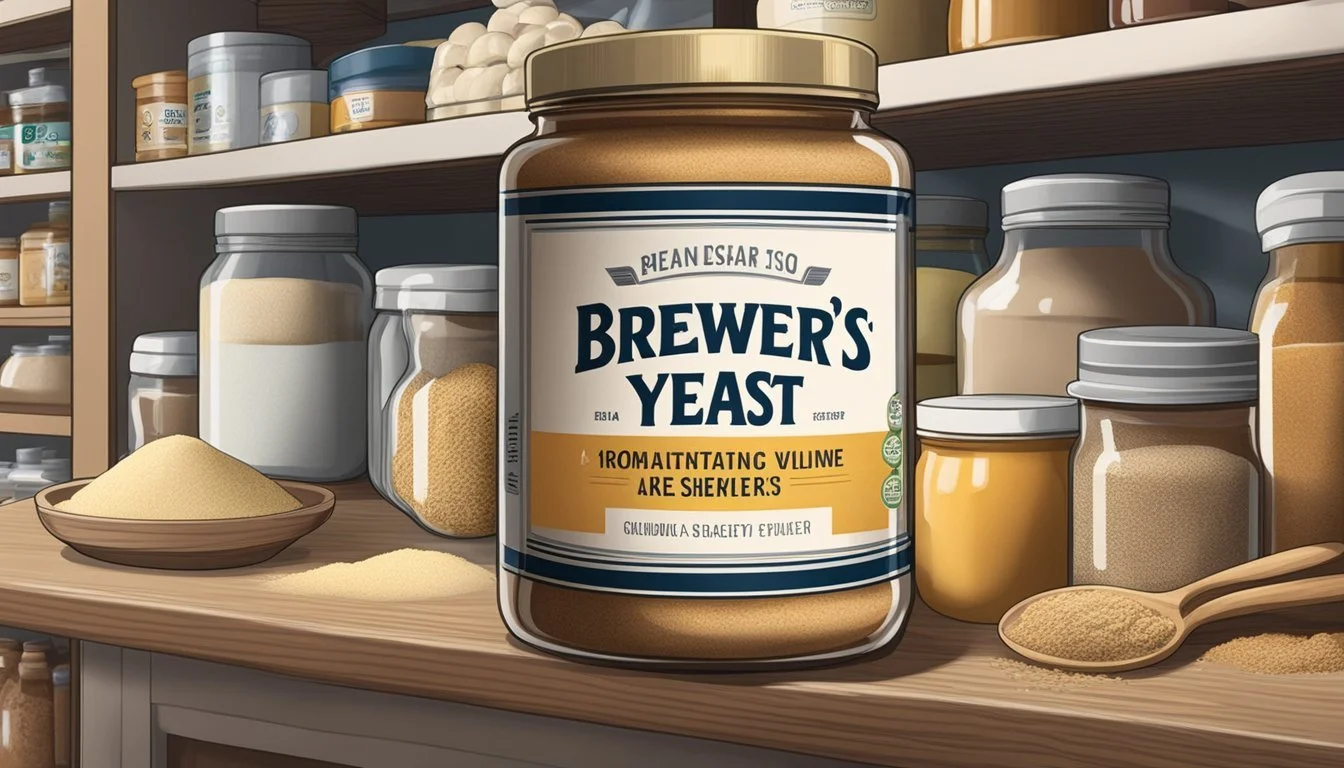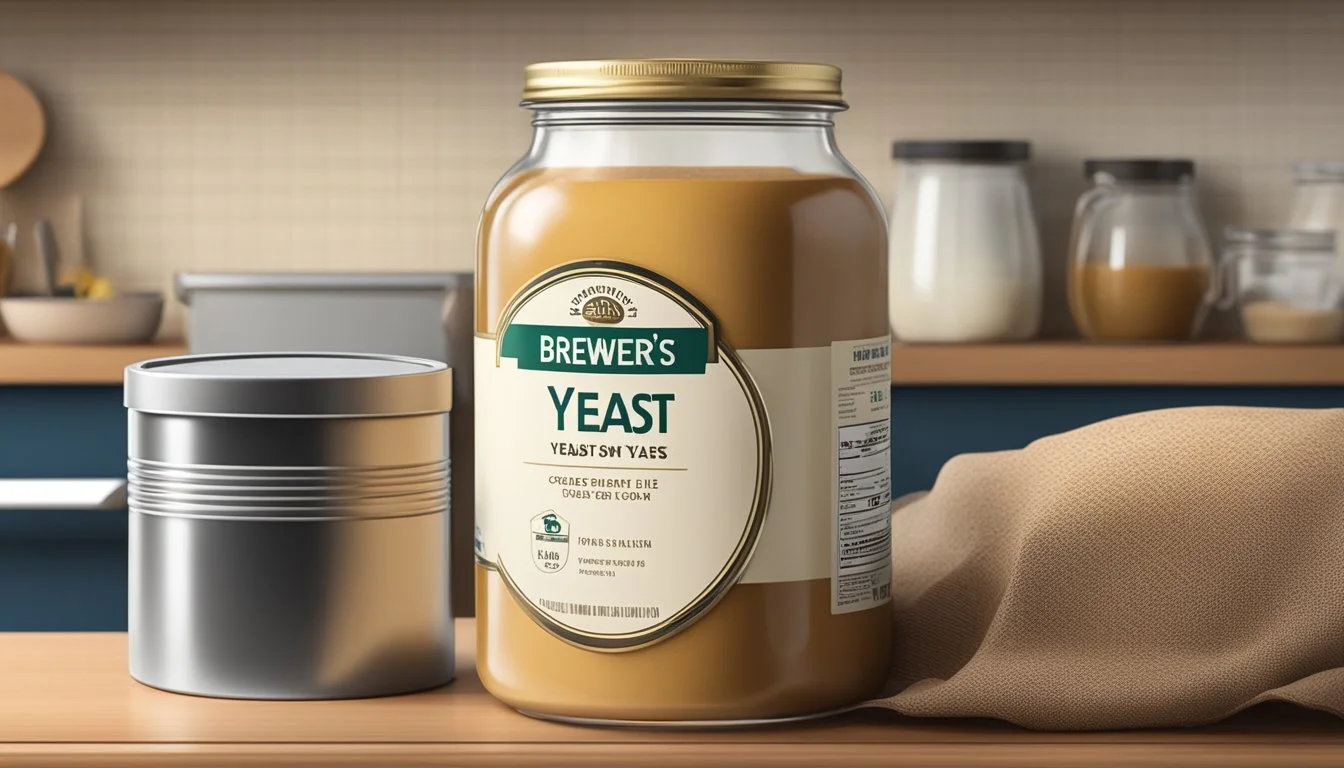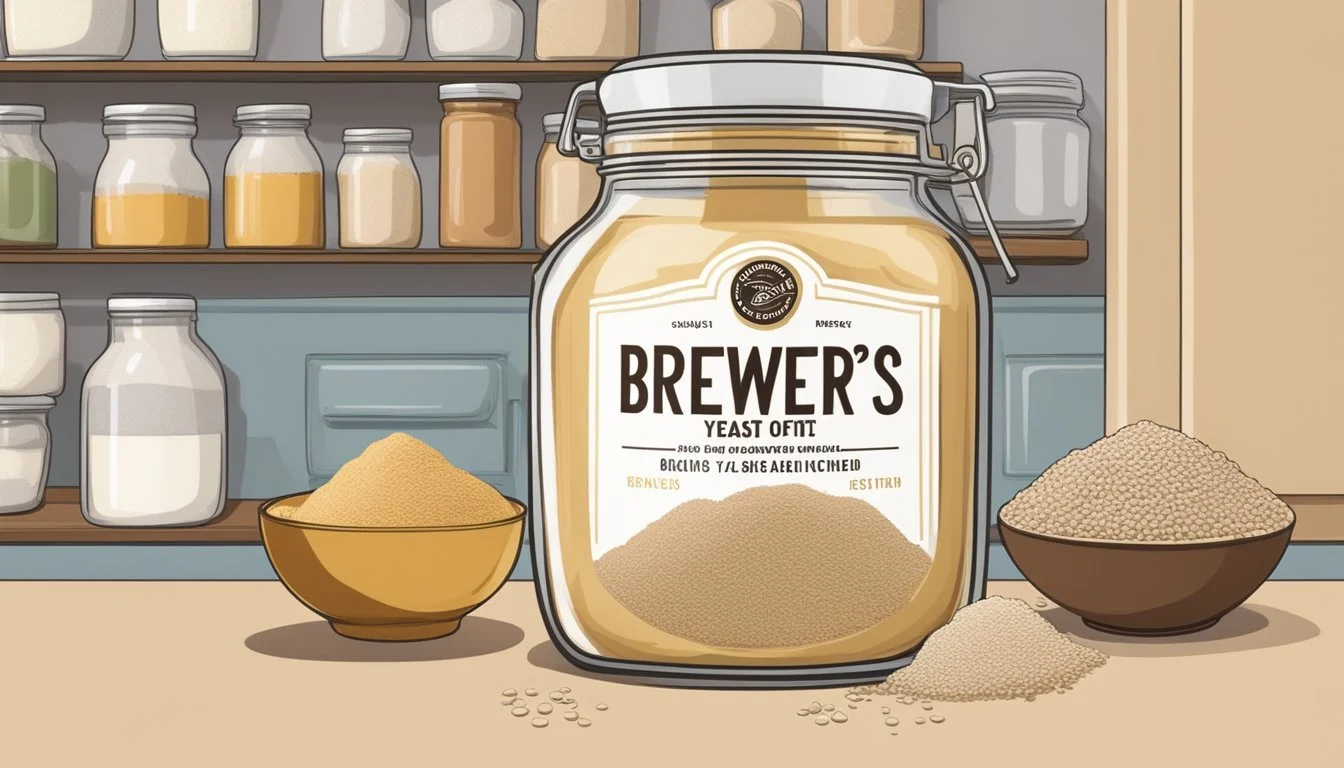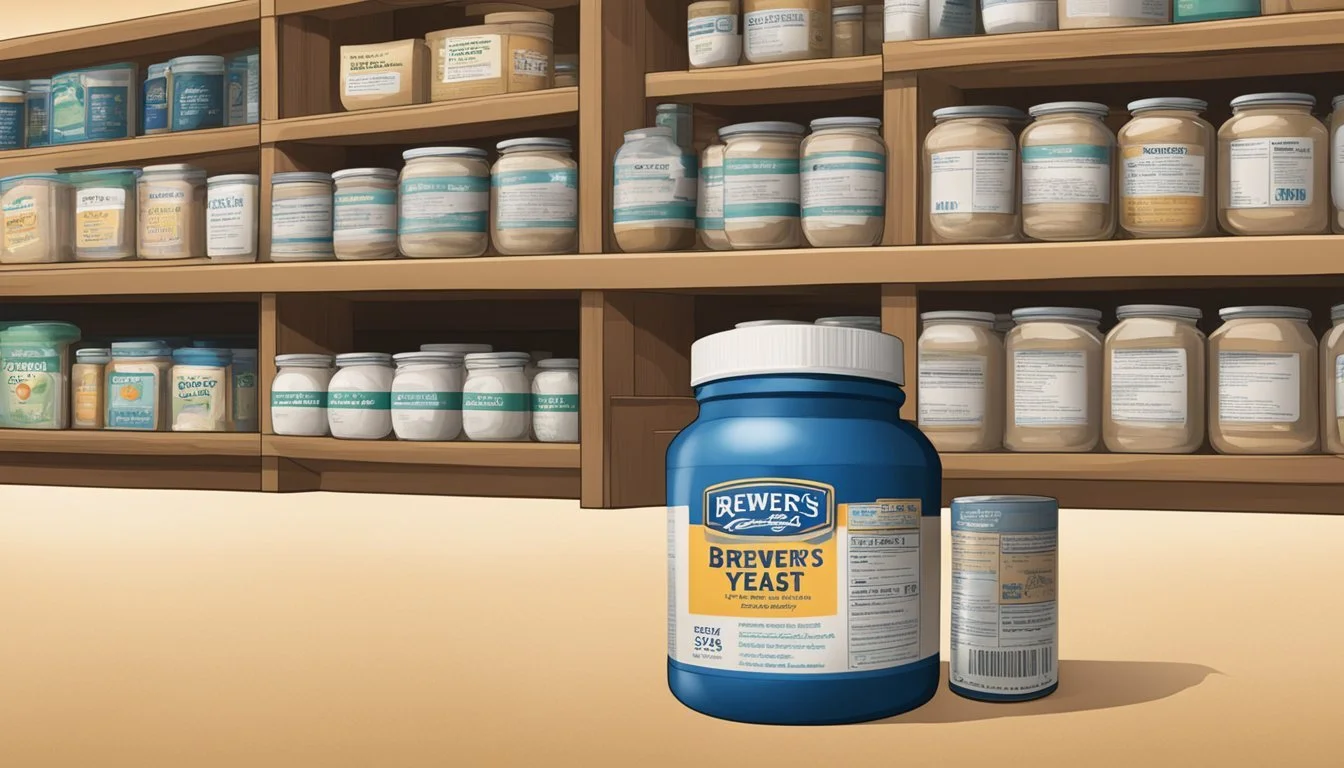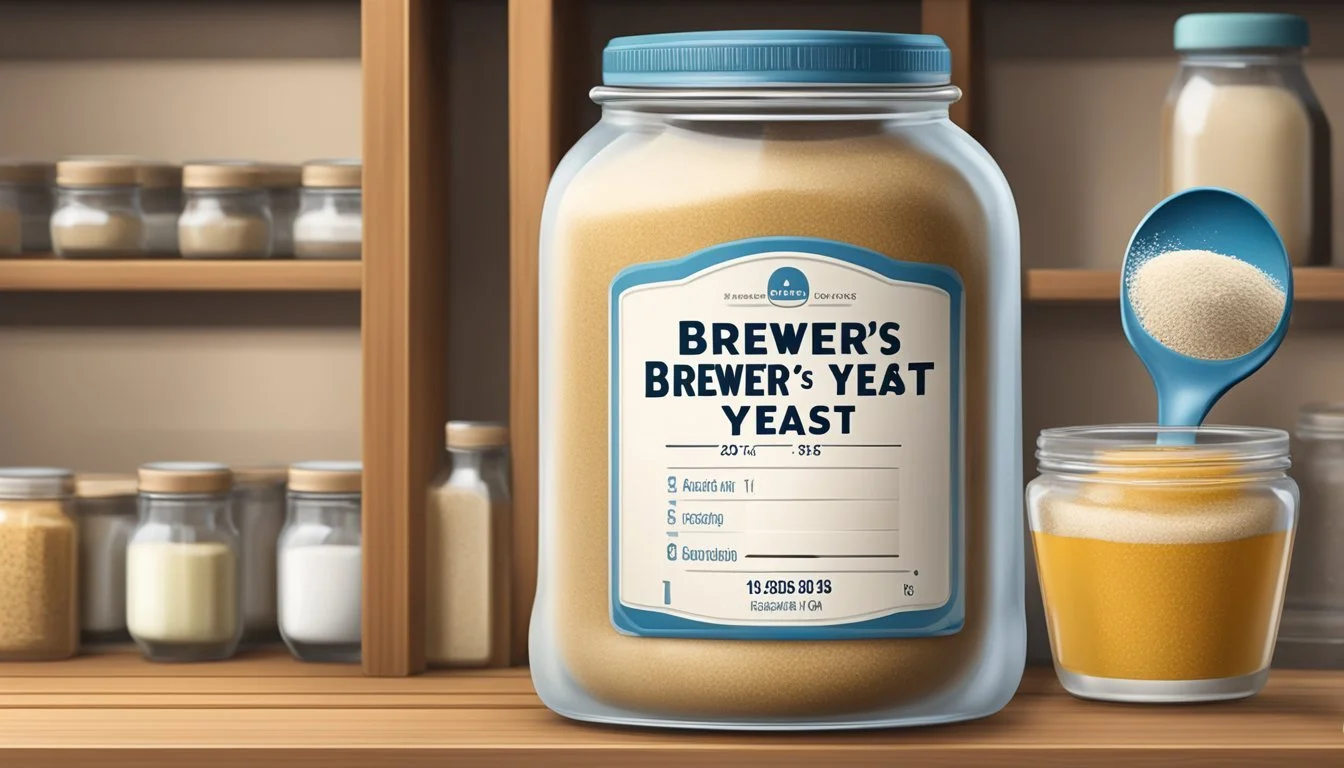How Long Does Brewer's Yeast Last?
Shelf Life and Storage Tips
Brewer's yeast, utilized in both brewing and baking, loses potency over time. Its shelf life is a critical factor that affects the quality of the final product, whether it be beer or bread. Dry brewer's yeast, due to its low moisture content, typically has a longer shelf life compared to its liquid counterpart. When stored properly in a cool, dry place, and in an airtight container, dry brewer's yeast can remain active for a significant duration, sometimes extending up to 18 months or more.
The longevity of brewer's yeast also depends on the form in which it's purchased. Commercially sold dry yeast often comes with an expiration date, usually between one to three years, indicating the time frame in which its efficacy is guaranteed. On the other hand, liquid brewer's yeast usually has a shorter shelf life, typically between three to six months. Nonetheless, it's possible for both types to retain viability past these dates if storage conditions are optimal.
To maintain the quality of brewer's yeast, and in turn the quality of the end product, attention to storage conditions is key. Factors such as temperature, exposure to air, and humidity play pivotal roles in preserving the yeast's activity and ensuring it performs effectively when used. Proper storage not only prolongs the yeast's life but also maintains its reliability for consistent brewing and baking outcomes.
Understanding Brewer's Yeast
Brewer's yeast is a critical ingredient for brewing beer and baking, known for its role in fermentation. It is differentiated by form and sought after for its nutritional properties.
Types of Brewer's Yeast
Dry Yeast: There are two main types of dry brewer's yeast:
Active Dry Yeast: With a longer shelf life, active dry yeast (how long does active dry yeast last?) requires rehydration before use.
Instant Dry Yeast: Often referred to as rapid-rise yeast, it does not require rehydration and starts working more quickly.
Liquid Yeast: Less common for home use but prized for its variety, liquid yeast tends to provide a broader range of flavors and is typically used by craft brewers. It has a shorter shelf life compared to its dry counterparts.
Properties of Brewer's Yeast
Brewer's yeast is rich in proteins and B vitamins, essential for the health and well-being of consumers. During the process of fermentation, brewer's yeast converts sugars (how long does sugar last?) into alcohol and carbon dioxide, resulting in the characteristic foam on top of the brewed beverage. This fermentation process highlights brewer's yeast as not only a rising agent but also a provider of nutritional nutrients.
Storing Brewer's Yeast
Proper storage maximizes the shelf life and potency of brewer's yeast. By understanding and controlling environmental factors such as temperature, humidity, and exposure to air, one can ensure the quality of yeast over time.
Ideal Storage Conditions
Brewer's yeast should be kept in an airtight container to prevent exposure to air, which can degrade its quality. Storing yeast in a sealed container also protects it from contaminants and pests. It should be placed in a cool place away from direct sunlight and heat, as these can accelerate the deterioration of the yeast's active properties.
Effect of Temperature and Humidity
Maintaining a consistent, moderate temperature and low humidity is crucial in preserving brewer's yeast. Heat and moisture are enemies of yeast, as they can lead to spoilage and reduced effectiveness. High temperatures and excessive humidity can negatively impact yeast, causing it to degrade faster or become less effective for brewing purposes.
Refrigeration and Freezing
When brewer's yeast is to be stored for extended periods, refrigeration and freezing can significantly extend its shelf life. Keeping yeast in the refrigerator is recommended especially after opening, whereas freezing is suited for long-term storage. In both cases, the yeast must be in a properly sealed and air-tight container to protect it from freezer burn or moisture buildup, which can affect its quality.
Remember to clearly label the storage container with the date of storage to effectively monitor its age and potential efficacy. By adhering to these storage practices, the vitality of brewer's yeast can be preserved for future brewing activities.
Expiration and Viability
Understanding the shelf life of brewer's yeast and determining its viability are essential in ensuring the quality and consistency of beer production. Brewer's yeast, depending on its form, has a finite lifespan, and its potency diminishes over time. Proper storage conditions can extend its usability beyond the best-before date. However, expired yeast may lose its effectiveness, necessitating viability tests.
Identifying Expired Yeast
Expired yeast often displays noticeable changes that signal it's no longer potent. Key indicators include:
Appearance: Yeast that has passed its expiration date may exhibit unusual colors or clumping, diverging from its typical uniform granular form.
Odor: A sour or off smell, contrary to the familiar earthy aroma, can indicate spoilage.
Best-before Date: Brewer's yeast comes with a best-by date or expiration date, indicating the manufacturer’s guarantee of its peak performance. Dry yeast typically has a shelf life of 1 to 3 years, while liquid yeast ranges from 3 to 6 months.
Viability Tests for Yeast
To ascertain if brewer's yeast retains its effectiveness, perform the following viability tests:
Proof Test:
Step 1: Dissolve a sugar source in warm water.
Step 2: Add the yeast and observe for signs of fermentation, such as foaming or bubbling.
A lack of activity within a reasonable timeframe suggests the yeast may be dead or significantly weakened.
Refrigerated Yeast Test:
Yeast stored in the refrigerator should retain viability longer than at room temperature. If the packaging is unopened and the yeast has been refrigerated, it may be effective up to several months past the best-by date. Observe the yeast after bringing it to room temperature to assess if it's still active.
Using Brewer's Yeast
Brewer's yeast is a critical component for both brewing and baking, contributing to the flavor, texture, and alcohol content of the product. Its use varies significantly between brewing beverages and baking consumables, with the choice of yeast strain and fermentation or proofing process being tailored to the desired outcome.
Brewing with Yeast
When brewing beer or other alcoholic beverages, the brewer's yeast serves as the workhorse of fermentation, converting sugars into alcohol and carbon dioxide. Each strain of yeast imparts distinct characteristics to the beverage. For example, ale yeast ferments at warmer temperatures and provides a fruity flavor profile, while lager yeast ferments at cooler temperatures resulting in a crisper taste.
Yeast Starter: Prior to adding to the wort—the sugary liquid extracted from mashing grains—a yeast starter may be prepared to ensure yeast vitality and an active culture.
Alcohol Production: The choice of yeast and its management during the brewing process determine the alcohol by volume (ABV) and flavor complexity of the beer.
Key steps in brewing with yeast include:
Sanitize all equipment to prevent contamination.
Prepare a yeast starter to increase cell count.
Pitch the yeast into the wort at the recommended temperature.
Monitor fermentation, which may take several days to weeks.
Baking with Yeast
In baking, brewer's yeast is used less frequently than other types of yeast, such as baker's yeast. However, when it is used, its main role is as a leavening agent, creating light and airy textures in doughs.
Types of Baker's Yeast:
Active Dry Yeast: Robust and with a longer shelf life, used in many bread recipes.
Instant Yeast (how long does instant yeast last?): Also known as quick-rise yeast, it speeds up the proofing process.
Cake Yeast: Fresh yeast that's often used by professional bakers.
The baker primarily focuses on the proofing stage, where the dough rises as the yeast ferments the carbohydrates into CO2, which gets trapped in the dough and expands it.
For successful baking with brewer's yeast:
Hydrate the yeast if using active dry or cake yeast.
Knead the yeast into the dough thoroughly.
Allow sufficient time for proofing, which can vary depending on yeast type and environmental conditions.
Miscellaneous Uses and Considerations
Brewer's yeast, beyond its pivotal role in brewing, has a spectrum of applications that extend into health benefits and recycling for various purposes.
Health and Dietary Applications
Brewer's yeast is a rich source of chromium, which is known to help maintain normal blood sugar levels, making it beneficial for individuals managing type 2 diabetes. As a nutritional supplement, it is packed with proteins and other nutrients, bolstering the immune system and offering general health advantages. Brewer's yeast can also be found as “nutritional yeast,” which is used for its flavor and is popular among vegans and vegetarians due to its vitamin content and umami-rich profile.
Alternative Uses for Expired Yeast
When brewer's yeast passes its prime for consumable purposes, it doesn't have to go to waste. It can serve as an excellent fertilizer due to its nutrient content, providing nitrogen, phosphorus, and potassium which are crucial for plant growth. As such, gardeners often use expired yeast to fertilize plants, enriching the soil and fostering a more robust garden. Always research and apply the correct ratios of yeast to soil to prevent any adverse effects on plant health.
Troubleshooting and Safety
When using brewer's yeast, it's essential to recognize signs of compromised quality to ensure both the safety and success of your brewing process.
Common Issues with Brewer's Yeast
Brewer's yeast is a key ingredient in the production of beer and other fermented products. Its health and viability directly affect the finished product's quality and taste. Quality issues manifest as a lack of fermentation activity or off-flavors in the final beverage. Indicators of problems include:
Clumping: Yeast should be free-flowing when dry. Clumps may indicate moisture intrusion.
Color changes: A change in color can signal contamination or degradation.
Odor: Any off or unexpected odors could be a sign of contamination.
Poor fermentation: Lack of activity may mean the yeast is no longer viable.
If a brewer encounters mold on the yeast, they should discard the batch immediately to prevent the risk of infection.
Health Safety and Handling
Brewer's yeast must be handled properly to maintain safety and prevent health issues such as diarrhea or infection. Here are some safety guidelines:
Storage: Keep yeast in a cool, dry place, and refrigerate once opened.
Expiration: Heed the expiration dates. Expired yeast may not only be ineffective but can also lead to off-flavors and potential health risks.
Sanitation: Always sanitize brewing equipment to prevent contamination.
Observation: Before usage, inspect yeast for any signs of mold or spoilage.
Handling yeast with care ensures that it remains safe to use and maintains the quality of the brewing process.
Technical Aspects of Yeast
In brewing, yeast is the workhorse, responsible for fermentation—the process that produces alcohol and carbonation. Understanding how to measure yeast activity and recognizing different yeast strains are critical technical aspects for successful brewing.
Measuring Yeast Activity
Yeast activity is essential to assess whether the yeast is capable of fermentation. Brewers typically perform a yeast fermentation test to measure activity. This involves mixing yeast with a warm sugar solution and observing if it produces carbon dioxide, which causes the mixture to rise. The activity can be influenced by several factors:
Water Temperature: Yeast activity has an optimal range, usually between 20°C (68°F) to 30°C (86°F). Outside this range, yeast may become dormant or die.
Oxygen: Adequate oxygen levels are necessary for yeast to reproduce, though too much can negatively affect the beer's flavor.
Tools like a hydrometer or refractometer offer a quantitative measure of fermentation by gauging the density of the brew relative to water. A decrease in sugar content—as the yeast converts sugar to alcohol—creates a lower density, detected by these instruments.
Understanding Yeast Strains
Yeasts come in various strains, each with distinct characteristics suited for different beer types. Key factors in understanding yeast strains are:
Fermentis Yeast: A popular brand for brewers, Fermentis offers a range of dry yeast products which are known for their stability and ease of use.
Wyeast Liquid Yeast: This type of yeast is often preferred for its variety and the nuanced flavors it can impart to the beer.
Fermentis Dry Yeast: It has a longer shelf life, can be stored at room temperature, and is convenient for brewers looking for a consistent result without preparing yeast starters.
Yeast starters are small volumes of wort used to activate and multiply yeast before pitching into the full brewing volume. They ensure a healthy fermentation start, particularly important for high-density beers where a larger yeast population is beneficial.
Conclusion
When considering the shelf life of brewer's yeast, one finds that proper storage is key to longevity. Dry brewer's yeast typically remains viable for 12 to 18 months when stored in a cool, dry place. Opening the container reduces this expected lifespan, but even then, it can be refrigerated to extend its use up to one year.
For those who prioritize quality in their brewing or baking endeavors, it is recommended to use dry yeast within 4 months of opening. Liquid brewer's yeast presents a shorter shelf life, with optimal performance maintained for 3 to 6 months under proper storage conditions.
In summary:
Dry brewer's yeast shelf life: 12 to 18 months unopened.
Refrigerated dry yeast post-opening: Up to one year.
Optimal use of opened dry yeast: Within 4 months.
Liquid brewer's yeast shelf life: 3 to 6 months.
It is important to note that while expired yeast may not be poisonous, it can lose potency, leading to suboptimal fermentation in brewing or inadequate leavening in baking. Consumers should check for signs of spoilage such as clumping or off odors and verify the expiration date to ensure the best outcome in their culinary pursuits.

